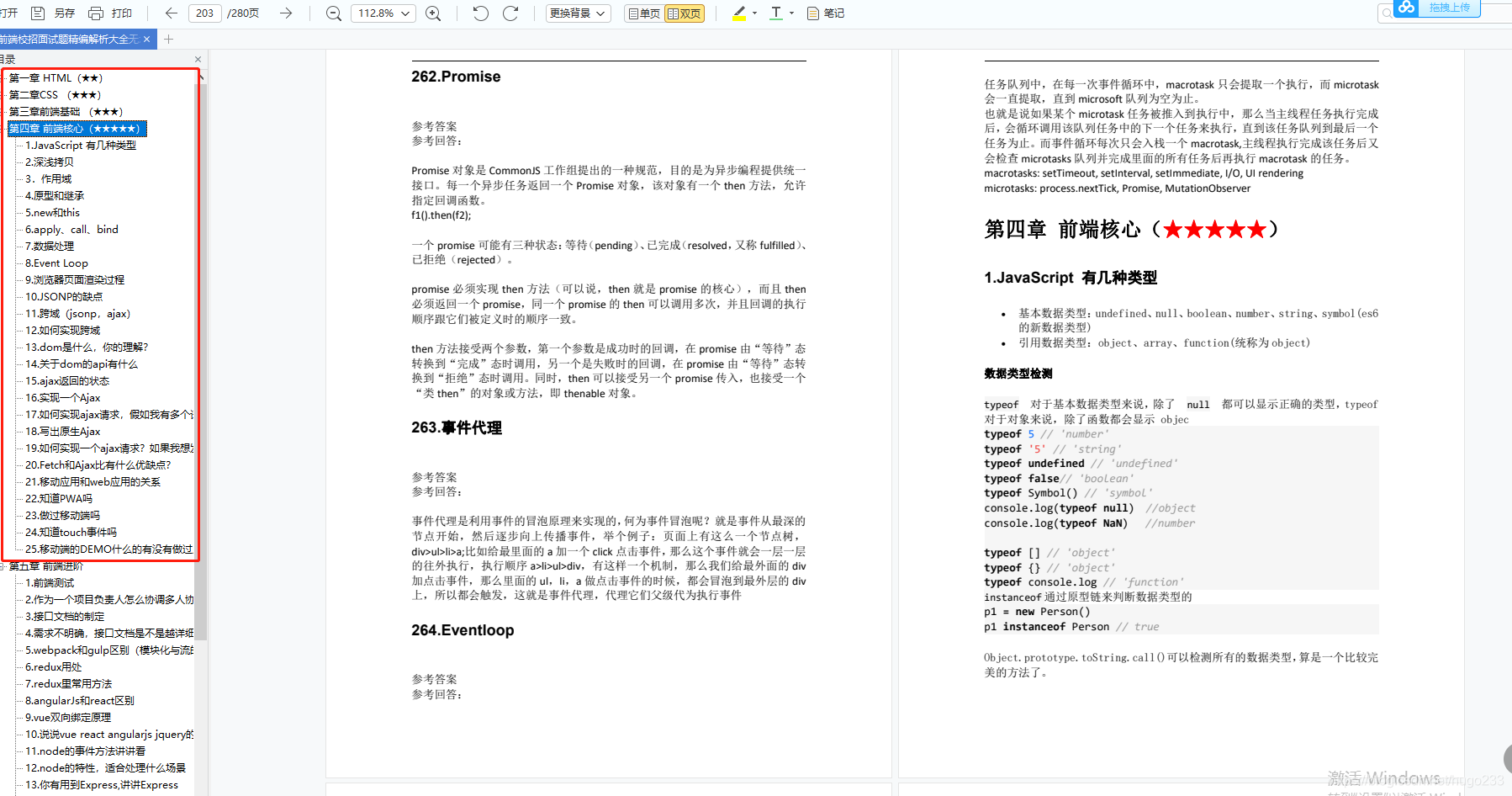-
如果我们使用 vue_cli 创建项目并且运行时,使用上述创建方法会出现一些报错,原因在于创建标签时使用了 template
-
而 vue_cli 使用的 运行时版的 vue,不支持 template 模板,需要打包的时候提前编译
解决方法有两种
-
修改 vue.config.js 配置使用完整版的 vue
完整包含运行时和编译器,体积比运行时版大 10k 左右,程序运行的时候把模板转换成 render 函数
module.exports = { // 渲染完整版 vue runtimeCompiler: true } -
使用 render 函数
运行时版本的 vue 不带编译器,所以不支持组件中的 template 选项,编译器的作用就是把 template 编译成 render 函数,运行时的组件可以直接写 render 函数
单文件组件时一直使用 template 没写 render 是因为在打包的过程中把单文件的 template 编译成 render 函数了,这叫做预编译
render
-
render 函数接受一个参数,通常叫做 h 作用是帮我们创建虚拟 DOM,h 由 vue 传递
-
h 函数接受 3 个参数
-
创建这个元素的选择器。
-
给标签设置一些属性,如果是 DOM 对象的属性,需要添加到 attrs 中。
-
生成的元素的子元素,所以是数组形式
initComponents (Vue) { Vue.component('router-link', { props: { to: String }, /* 运行时版本的 vue 不带编译器,所以不支持组件中的 template 选项,编译器的作用就是把 template 编译成 render 函数,运行时的组件可以直接写 render 函数 单文件组件时一直使用 template 没写 render 是因为在打包的过程中把单文件的 template 编译成 render 函数了,这叫做预编译 */ render (h) { // 该函数接收一个参数,通常叫做 h 作用是帮我们创建虚拟 DOM,h 由 vue 传递 return h('a', { // h 函数接受 3 个参数,1. 创建这个元素的选择器。2. 给标签设置一些属性,如果是 DOM 对象的属性,需要添加到 attrs 中。3. 生成的元素的子元素,所以是数组形式 attrs: { href: this.to } }, [this.$slots.default]) } // template: '<a :href="to"><slot></slot></a>' }) } -
router-view
const self = this
Vue.component('router-view', {
// 获取到当前路由地址对应的路由组件
render (h) {
const component = self.routeMap[self.data.current]
return h(component)
}
})
集合上述方法 检查是否存在问题
- 因为我们默认只会调用 install 方法,但是我们还有一些其他方法需要调用,还需要一个 init 方法,在 install 方法 被调用后,调用
createRouteMap() 与 initComponents()
init () {
this.createRouteMap()
this.initComponents(_Vue)
}
-
将上述所有方法整合(为了便于阅读,去掉注释)
// ../vuerouter/index.js let _Vue = null export default class VueRouter { static install (Vue) { if (VueRouter.install.installed && _Vue === true) return VueRouter.install.installed = true _Vue = Vue Vue.mixin({ beforeCreate () { if (this.$options.router) { _Vue.prototype.$router = this.$options.router this.$options.router.init() } } }) } constructor (options) { this.options = options this.routeMap = {} this.data = _Vue.observable({ current: '/' }) } init () { this.createRouteMap() this.initComponents(_Vue) this.initEvent() } createRouteMap () { this.options.routes.forEach(route => { this.routeMap[route.path] = route.component }) } initComponents (Vue) { Vue.component('router-link', { props: { to: String }, render (h) { return h('a', { attrs: { href: this.to } }, [this.$slots.default]) } }) const self = this Vue.component('router-view', { render (h) { const component = self.routeMap[self.data.current] return h(component) } }) } } // 记得替换 router/index.js 中引入的 VueRouter import Vue from 'vue' // import VueRouter from 'vue-router' import VueRouter from '../vuerouter' import Home from '../views/Home.vue' import Home from '../views/About.vue' Vue.use(VueRouter) const routes = [ { path: '/', name: 'Home', component: Home }, { path: '/about', name: 'About', component: About } ] const router = new VueRouter({ routes }) export default router- 实际测试后,我们会发现,上述仍然存在一些小问题,也就是我们在点击 router-link 时,会改变路径刷新页面,但是在单页面组件中,我们是不需要刷新页面的,所以我们需要对 router-link 在做一点小调整
完善 router-link
-
我们需要给 a 标签添加 1 个 方法,这个方法有三个作用
-
通过 pushState 方法 改变浏览器地址栏,但不给服务器发请求
-
将当前路由路径 同步给默认值
-
阻止标签默认事件
pushState 方法接受 3 个参数
- data。
- title 网页的标题。
- url 地址。
-
Vue.component('router-link', { props: { to: String }, render (h) { return h('a', { attrs: { href: this.to }, on: { click: this.clickHandler } }, [this.$slots.default]) }, methods: { clickHandler (e) { // 1. 通过 pushState 方法 改变浏览器地址栏,但不给服务器发请求 history.pushState({}, '', this.to) // 该方法接受 3 个参数,1. data。2. title 网页的标题。3. url 地址 this.$router.data.current = this.to e.preventDefault() } } })
最终的完善
将上边的 router-link 完善后,我们的 Vue-Router 就实现了,但是还差一个小功能,也就是浏览器左上角的前进后退就失效了,所以我们需要在添加一个小方法来实现最终的完善
- 其实就是通过 监听 popstate 将当前的路由路径赋值给 current 来达到左上角的前进后退功能**(记得将其添加到 init 方法中)**
initEvent () {
window.addEventListener('popstate', () => {
this.data.current = window.location.pathname
})
}
- 最终完整版代码(分为两版,有注释的在最后)
let _Vue = null
export default class VueRouter {
static install (Vue) {
if (VueRouter.install.installed && _Vue === true) return
VueRouter.install.installed = true
_Vue = Vue
Vue.mixin({
beforeCreate () {
if (this.$options.router) {
_Vue.prototype.$router = this.$options.router
this.$options.router.init()
}
}
})
}
constructor (options) {
this.options = options
this.routeMap = {}
this.data = _Vue.observable({
current: '/'
})
}
init () {
this.createRouteMap()
this.initComponents(_Vue)
this.initEvent()
}
createRouteMap () {
this.options.routes.forEach(route => {
this.routeMap[route.path] = route.component
})
}
initComponents (Vue) {
Vue.component('router-link', {
props: {
to: String
},
render (h) {
return h('a', {
attrs: {
href: this.to
},
on: {
click: this.clickHandler
}
}, [this.$slots.default])
},
methods: {
clickHandler (e) {
history.pushState({}, '', this.to)
this.$router.data.current = this.to
e.preventDefault()
}
}
})
const self = this
Vue.component('router-view', {
render (h) {
const component = self.routeMap[self.data.current]
return h(component)
}
})
}
initEvent () {
window.addEventListener('popstate', () => {
this.data.current = window.location.pathname
})
}
}
let _Vue = null
export default class VueRouter {
// 传入两个参数,一个是 vue 的构造函数,第二个是 可选的 选项对象
static install (Vue) {
// 1. 如果插件已经安装直接返回
if (VueRouter.install.installed && _Vue === true) return
VueRouter.install.installed = true // 表示插件已安装
// 2. 把 vue 的构造函数记录到全局变量中,因为将来我们要在 VueRouter 的实例方法中使用 vue 的构造函数
_Vue = Vue
// 3. 把创建 Vue 实例时候传入的 router 对象注入到 Vue 实例上
Vue.mixin({
beforeCreate () {
if (this.$options.router) {
_Vue.prototype.$router = this.$options.router
this.$options.router.init()
}
}
### 性能优化
1.webpack打包文件体积过大?(最终打包为一个js文件)
2.如何优化webpack构建的性能
3.移动端的性能优化
4.Vue的SPA 如何优化加载速度
5.移动端300ms延迟
6.页面的重构
**所有的知识点都有详细的解答,我整理成了280页PDF《前端校招面试真题精编解析》。**























 998
998

 被折叠的 条评论
为什么被折叠?
被折叠的 条评论
为什么被折叠?








